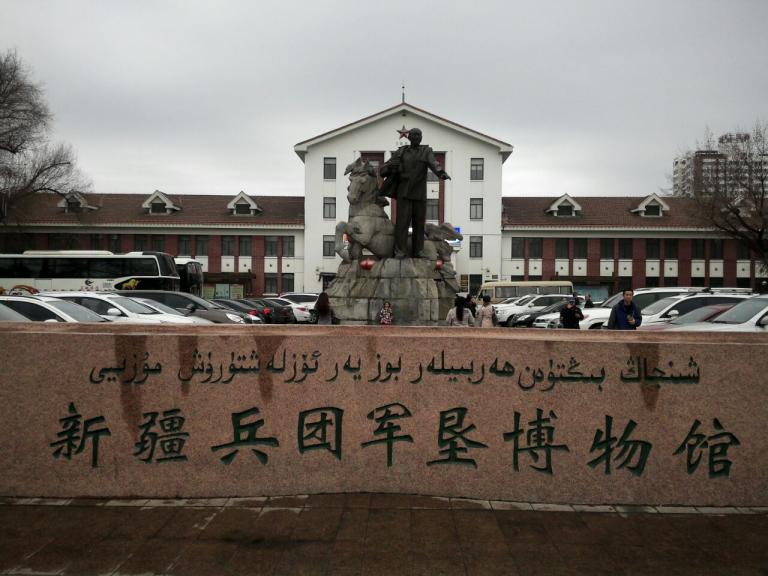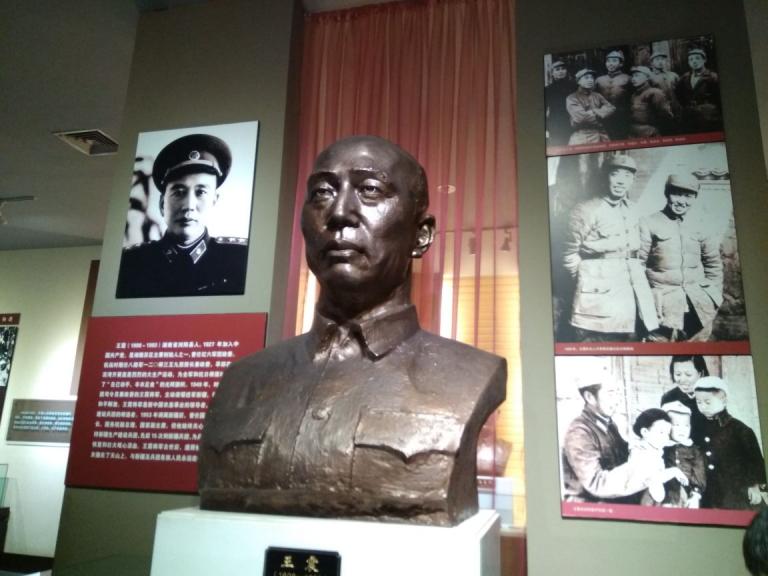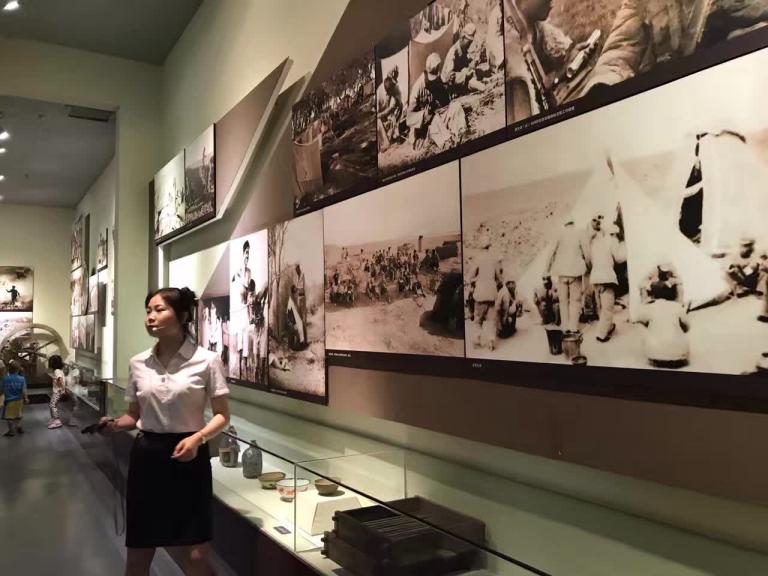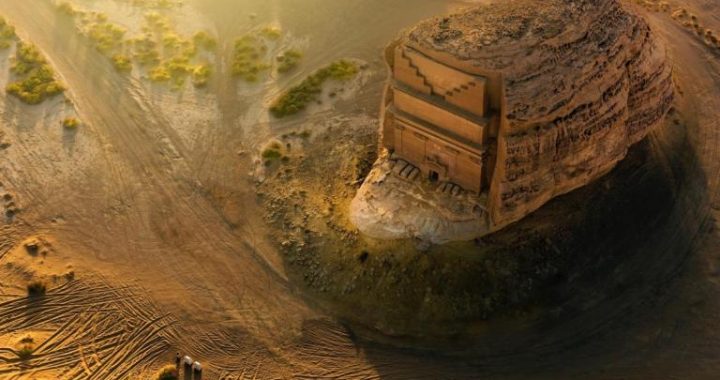A Broad View on Shihezi Army Reclamation Culture
8 min readWith unique tourism resources,the famous army reclamation city-Shihezi isthe epitome and window of the Xinjiang Production and Construction Corps,which can be called the success profile on Chinese two thousand years’career of settlement defend edge.It has not only the country’s largest intensive agriculture and advanced modern industry,but also beautiful natural scenery.
Through award-winning urban construction,it enjoys good ecological environment.The contry’s only Army Reclamation Museum,Zhou Enlai Monument and Aiqing’s Poetry Center here become the highlights of Shihezi tourism.
Recreation Square
The Recreation Square,located in the No.2 district of Shihezi city center and covering an area of 24.13 hectares currently,was early built in 1984 and rebuilt in large scale in 1998.The whole square is composed by four parts,the middle,the east,the west and the south.The middle is the central square as the main area,the east and west sides are the garden green land and the south is composed by green land and the Workers Cultural Palace.Stepping into the square,you’ll be firstly attracted by the Laser Music Fountain,which covers an area of 1,600m2with over 1,700 sprayers,84 water pumps and 830 color water lamps.In the evening,the fountain in the light of colored lamps appears with hexapetalous flower shape,divided into three levels from the middle,in which,the highest one sprays water up to 20m,magnificently andspectacularly;the water columns in various shapes sprayed by surrounding small fountains and the main fountain are enhancing each other’s beauty with silver jade-like columns and jubilation,which becomes one of the most attractive sceneries in the square.
on the south side of the fountain is the impressive Bronze Statue of General Wang Zhen,east and west sides of which are respectively the Frontier New Movement Statue and Army Reclamation First Plough Statue surrounded by flowers.The three statues are distributed in triangle,together forming the unique city statues of Army Reclamation new city.
Xinjiang Corps of reclamation Museum

Statue of General Wang Zhen
The statue,composed by the whole-length bronze statue of General Wang Zhen and one war horse by granite,is 8.5m high,under the base of which,four golden characters,”General Wang Zhen”written by Deng Xiaoping was engraved.The whole statue,combing the bronze and stone,is one integrated mass with clear priorities,martially and magnificently.
Wangzhen Bronze Statue in Xinjiang Corps of reclamation Museum

The General Wang Zhen in the sculpture is full of energy,smilling and looking into the distance while standing at a high slope,which is taken from one moment when General Wang Zhen conducted site survey in Shihezi in the early 1950s.Sculptors,conceiving according to history and art,arranged one horse beside the General,which is not only the natural portrayal of General conducting the site on a horse,but also the artistic symbol of the army horse life of the General.In handling the relationship between the man and horse,the ridng posture is not adopted in order to indicate the general approachable style of the General and the process he turning to peace production from the war.
The Statue of General Wang Zhen,completed in September 1994,was created by Professor Ye Yushan,a famous sculptor.
Army Reclamation First Plough Statue
The overall statue is 4.1m high, whose main body is 7m long and 2.7m high, locating at a gray marble veneered base 9m long,2m wide and 4.1m high. The main body of the statue is the ploughing scenes that two men struggled to pull the plough in front and one held the furrow plough at the back. The statue reproduces the scenes of hard work and land reclamation by “Old Army”at that time through three naked and forward pioneers. The extremely difficult pioneering conditions at that time are reflected by the simple uniforms, original instruments of labour and heavy gait. The dark statue is made from forge copper, which gives one a deep and dignified feeling, and the forge copper craft symbolizes the thoroughly tempered experiences of pioneers.
Army Reclamation First Plough Statue is created by Professor Zhang Yuli and Yang Mei in the Department of Sculpture of Luxun Academy of Fine Arts and completed in September 1985 before Xinjiang Uyghur Autonomous Region’s 3oth anniversary. It has become the symbol of corps hardworking and enterprising spirit and the classroom for revolutionary tradition and patriotism education.
Frontier New Movement Statue
The overall statue is 4.1m high, whose main body is 7m long,1.7m wide and 2.8m high, locating at a gray marble veneered base 8m long,2m wide and 1.2m high. The main parts include three women and one baby boy casted by copper. The focus of this sculpture group is a mother placed in the middle with a baby in her arms, representing those female soldiers from Shandong and Hunan Province to Xinjiang corps in early 1950s. In the side-front of the mother leans a young girl with short hair, representing the educated youths from provinces such as Shanghai, Beijing, Tianjin, and Wuhan to corps construction in Xinjiang in 1960s. The girl is carefree and demure, longing for her bright future. Within the sculpture group, the Uighur girl represents the minorities in Xinjiang province. Females from different times and different places, living together in harmony and joy symbolizes the great unity of nations. While the baby boy indicates that the corps business will be carried on in every generation.
The statue, completed in September 1994 and created by famous Chinese sculptor He’e, is a monument by females in Xinjiang corps.
Monument of Premier Zhou Enlai
On July 5,1965, Premier Zhou Enlai and vice Premier Chen Yi inspected Shihezi City in Xinjiang province. In Shihezi total field of forest belt, they met some cadres, reclamation soldiers and Shanghai youths supporting the frontie, when Premier Zhou Enlai delivered his famous dictum of “family background shall be accepted, but the road can be selected”. To memorize his great contributions after Zhou Enlai passed away, the Monument of Premier Zhou Enlai was in construction since the spring in 1977, and finished in July 1 of the same year. It is the first monument in the nation for Premier Zhou Enlai. In1991, it was expanded into a memorial. And today, it has become an important patriotic education base.
The main body of the Monument of Premier Zhou Enlai is poured with concrete, with an overall height of 12.8m. The monument is 7.8m high. The height of its inscription is 6.7m. The monument body is marble-faced. On the front are twelve brass-plated large characters, which are “Dear Premier Zhou Enlai to be remembered forever”. On the back is the inscriptional record. On both sides engraved with premier’s inscription for reclamation soldiers in the Army, which is”under the red flag of victory of Mao Zedong Thought, prepare the war to defend the frontier, produce and construct, hold national unity, strive hard for revolution and press forward”.
In the north of the monument is the Memorial for Premier Zhou Enlai, with an overall area of 1,200m2, within which are main hall and exhibition hall. On the north wall in the main hall hangs a giant picture of Premier Zhou meeting Shanghai youths supporting the frontier in 1965. Under this picture was abronze statue of Premier Zhou sculpted according to his pictures took by Italian photojournalists. In the exhibition hall, there are more than 230 pictures and some objects. In the south is the Memorial Hall, which covered an area is 225m². on the front wall within the Hall is a large relief carving, which is 2.2m high and 9m long. It says “Premier Zhou and vice Premier Chen Yi together with people from different nations in Xinjiang”.
In the east of the memorial is a sculpture group in bronze, the Monument for the West. It is 14t weight,8.5m high and 6.6m wide. The whole sculpture consists of 18 people including Premier Zhou, vice Premier Chen Yi, Shanghaiyouths supporting the frontier, cadres and the masses in the farm, and model workers.
Museum of Xinjiang Corps Army Reclamation
The Museum of Xinjiang Corps Army Reclamation, located in Middle Beisan Road in Shihezi City, was rebuilt on the basis of the original office building for Party committee of the eighth agricultural division in the city, which was called “the Army Reclamation First Building”. The museum kept the original appearance of “the first building for reclamation”, and expanded the inside. The covered area of the museum is 9,703m2, and the display area is more than 2,000m². It is the only museum that takes the history of new China’s stationing and reclamation in Xinjiang to defend the frontier as its major content for study and display.
In the Exhibition Hall, there are more than 800 objects and 300 pictures being displayed. All these historical relics are truly records of people for reclamation, original portrayal for their reclamation life, and condensed witnesses for Xinjiang reclamation cause. In 2004, Museum of Xinjiang Corps Army Reclamation was designated by the central authority as a “Red Tourism”tourist spot.
On October 10,2004, the Museum of Xinjiang Corps Army Reclamation in Shehezi City was unveiled.
Aiqing’s Poetry Center
The Aiqing’s Poetry Center is located at North Second Road 21#, Shihezi City. It is west to the Recreation Square and north to the Music Square. The center covers an area of about 6,700m2, and the usable area in the center is 2,484m². The center was built for memorizing Aiqing, an outstanding poet in Modern China.
Aiqing came to the Xinjiang Production and Construction Corp in 1959, came to the Eighth Agricultural Division in 1960, came to the 14th Regiment to take part in manual labor in 1967, and went back to Beijing at the end of 1975.He lived in Shihezi as long as 15 years. With profound affection to Shihezi, Aiqing once wrote verses,”I’ ve been to many places, but only this city is the youngest. It’s so beautiful that I love it at first sight. It’s neither a mirage no the Penglai Fairyland. It is with every tree and bush here relying on people’s perspiration…”
Internal Xinjiang Corps of reclamation Museum

The Aiqing’s Poetry Center mainly consists of three exhibition halls,with the first exhibition hall exhibiting the lifetime and major works of Aiqing,thesecond exhibition hall narrating the late years of Aiqing and the evaluation on Aiqing from state leaders and famous literary people,and the third exhibition hall exhibiting precious souvenirs such as paintings and calligraphies of numerous celebrities in the art circle for memorizing Aiqing.
Now,literature organizations such as the Shihezi Federation of Literary and Art Circles and the Green Wind Poetry Magazine are stationed in the Aiqing’s Poetry Center.
First Army Reclamation Company
The First Army Reclamation Company is located in the northern slope of the Red Mountain which is west to the Manas River in the territory of Shihezi.Originally,a reclamation company was stationed here in the 1950s,so army reclamation relics such as mud dwellings,rammed-earth kitchens,water reservoirs and flood dams for reclamation in those days are kept here,andreclamation tools and household items such as wooden-wheel oxcarts,wooden ploughs and stone mills are also kept here.From 2002 to 2003,the 152nd regiment of the Eighth Agricultural Division invested more than 3 million RMB to construct a participatory tourist attraction on the site of the former reclamation army.Comprising a first army-reclamation plough-shaped decorated gateway,an army-reclamation mud dwelling,an army-reclamation threshing field,a shooting range,a ski field and a cooperative and so on,and integrating catering,accommodation,recreation,leisure,vocation,tourism and education into one,the tourist attraction becomes a living and floating army reclamation museum.
With tourists wandering in the museum,the atmosphere consisting of the mud dwellings,the production tools,the flood dams,old soldier coats,horsecarts,black and white pictures and commentaries gives people a feeling of return to the past development and construction years.








